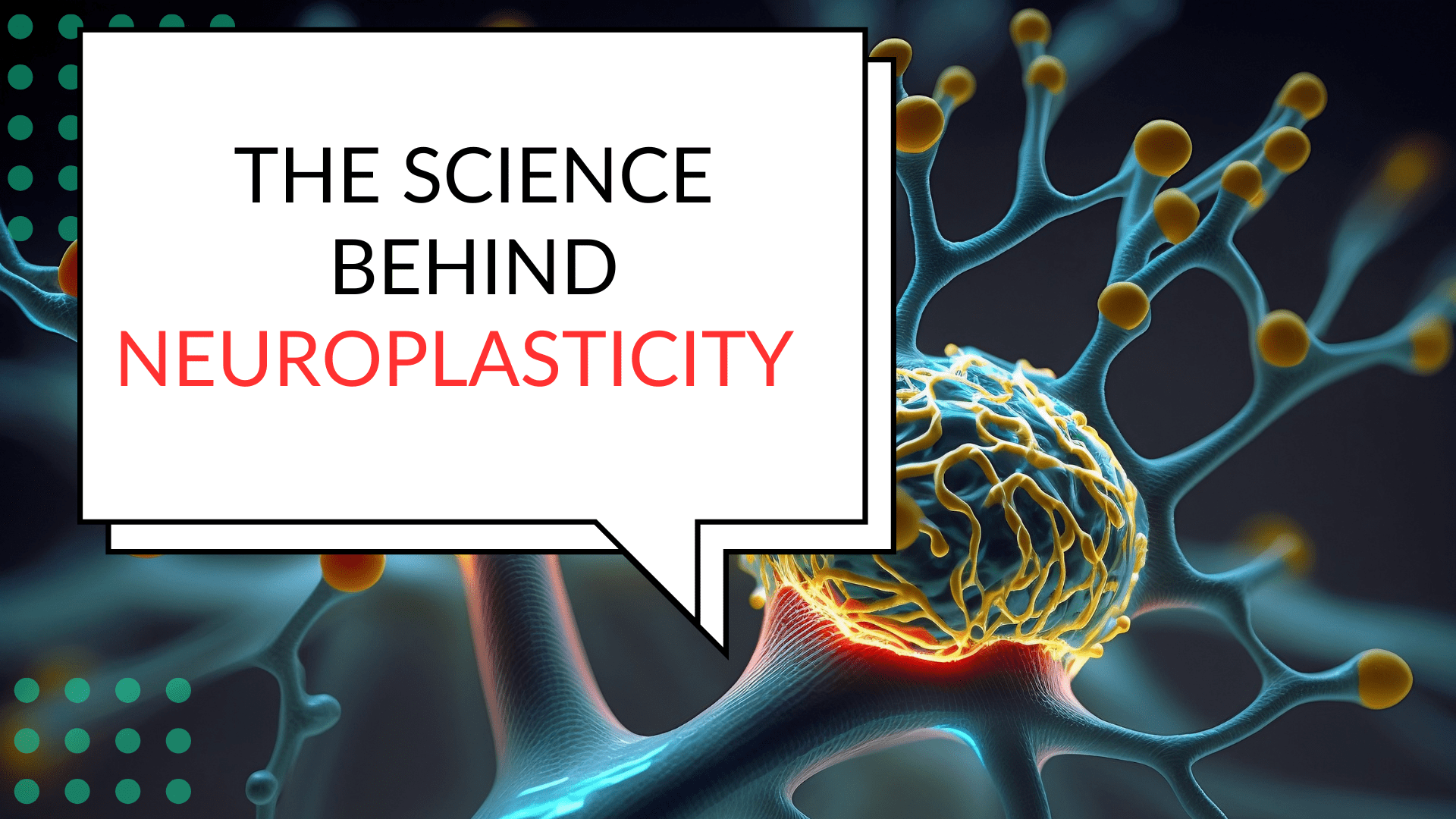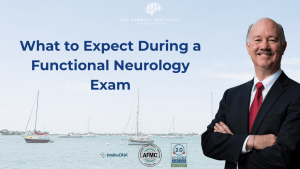The Science Behind Neuroplasticity: How the Brain Rebuilds and Restores Function
Last Updated: October 2025
For years, people believed that once the brain was damaged, recovery was impossible. However, modern neuroscience has completely changed that perspective. Today, we know the brain is not a fixed organ—it is flexible, adaptive, and capable of incredible transformation. This life-changing ability is called neuroplasticity, and it forms the foundation of every success story at The Carroll Institute. Once the root causes of damage are addressed, neuroplasticity becomes the driving force behind rebuilding, restoring, and reconnecting the brain.
What Exactly Is Neuroplasticity?
Neuroplasticity refers to the brain’s remarkable ability to reorganize itself by forming new neural connections throughout life. In simpler terms, it means your brain can literally rewire itself to adapt to new experiences, recover from injury, and even reverse the effects of cognitive decline. Moreover, it allows one part of the brain to take over functions that another part may have lost due to damage or disease.
Every thought, emotion, and physical movement changes the brain’s wiring. When neurons “fire together,” they begin to “wire together,” strengthening communication pathways that help the brain operate more efficiently. Over time, these strengthened connections lead to improved memory, sharper focus, and restored cognitive function. Therefore, neuroplasticity is not just a scientific concept—it’s the biological mechanism of healing itself.
Why Neuroplasticity Is the Key to Reversing Cognitive Decline
In Alzheimer’s disease and other forms of dementia, it’s not only brain cells that are lost—it’s the communication between them. Fortunately, neuroplasticity allows those broken pathways to be rebuilt or rerouted. As a result, when we reduce inflammation, remove toxins, and stabilize metabolism through the ReCODE Program, the next essential step is to actively engage neuroplasticity so the brain can form new, healthy connections.
Without this process, the brain’s recovery remains incomplete. Once the root causes are eliminated, the neural networks must be retrained through targeted exercises, sensory stimulation, and repetitive engagement. In short, neuroplasticity is how the brain learns to heal itself. It bridges the gap between removing damage and restoring full function.
The Science of How Neuroplasticity Works
Neuroplasticity happens through three primary mechanisms that interact continuously:
- Synaptic Plasticity: Strengthening or weakening the communication between neurons. Repetition reinforces the signal, just like practicing a skill makes it easier over time.
- Neurogenesis: Creating new brain cells, especially in the hippocampus—the brain’s memory center. New neurons help restore learning and recall.
- Cortical Remapping: Reassigning new brain areas to handle lost functions, allowing recovery from injury or neurodegeneration.
Because these mechanisms work together, the brain becomes more resilient. As new connections form, old memories can resurface, and lost abilities can return. Therefore, each small step of progress compounds into larger cognitive improvements. The science clearly shows that the brain can—and does—heal when given the right conditions and stimulation.
Scientific Evidence That Neuroplasticity Works
Decades of research have confirmed that neuroplasticity continues throughout life. Studies in Nature Reviews Neuroscience and Frontiers in Aging Neuroscience reveal that even in older adults, consistent cognitive training can increase brain volume and improve memory. Furthermore, researchers such as Dr. Michael Merzenich, a pioneer in neuroplasticity science, demonstrated that specific, repetitive mental exercises can physically change the structure of the brain—even after injury.
Additionally, the National Institutes of Health has published extensive findings showing that post-stroke patients who undergo targeted neurological rehabilitation create entirely new neural pathways to regain movement and speech. These studies prove that neuroplasticity is not a theory—it is a measurable, biological process that can restore brain function at any age.
How The Carroll Institute Activates Neuroplasticity
At The Carroll Institute, neuroplasticity is the foundation of our treatment strategy. Once a patient’s root causes are identified and corrected, we use advanced technologies and cognitive rehabilitation to activate neuroplasticity and rebuild brain function. This is where healing truly begins.
- Neurosensory Motor Integration (NSMI): Exercises that simultaneously engage sight, sound, and movement to retrain coordination and focus.
- Photobiomodulation Therapy: Using the Neuronic Helmet to increase oxygenation, blood flow, and neuronal repair.
- Custom Cognitive Drills: Targeted exercises created for each patient’s unique neurological map to strengthen specific brain pathways.
- Eye Movement and Balance Training: Rehabilitation techniques that reconnect cerebellar and cortical pathways to enhance both stability and cognition.
As these exercises are repeated, new neural connections form. Consequently, communication between neurons becomes faster and more efficient. Patients often begin noticing clearer thinking, better balance, and improved memory within weeks of beginning care. Each success builds upon the last, creating a steady progression toward recovery.
Why Neuroplasticity Changes Everything
Neuroplasticity changes how we think about aging and cognitive decline. Instead of accepting deterioration as inevitable, it gives patients hope—and more importantly, results. By retraining the brain through repeated stimulation, patients can regain cognitive abilities once thought permanently lost. This approach transforms Alzheimer’s and dementia care from passive management to active recovery.
Because of this, The Carroll Institute’s 84% success rate is not a coincidence—it is the outcome of applying neuroplasticity principles consistently and scientifically. Once the brain’s chemistry is balanced, neuroplasticity rebuilds the hardware of thought itself. The result is a stronger, more connected, and more resilient brain.
Why Most Clinics Overlook Neuroplasticity
Most clinics stop after addressing biochemistry—they detoxify, reduce inflammation, or optimize hormones. While these steps are important, they are only part of the solution. Without targeted neurological training, the brain cannot rebuild its lost connections. In other words, removing what’s wrong doesn’t automatically restore what’s missing. This is where many treatment programs fall short.
In contrast, The Carroll Institute integrates functional neurology directly with the ReCODE Program to ensure that biochemical restoration and neurological rehabilitation occur together. This dual approach creates the ideal environment for neuroplasticity to thrive, leading to measurable and lasting improvements.
Neuroplasticity at Any Age
One of the most inspiring aspects of neuroplasticity is that it never ends. Even into the eighth or ninth decade of life, the brain retains its ability to adapt and learn. Studies in Frontiers in Aging Neuroscience have shown that older adults who perform cognitive exercises can increase neural density and improve memory performance. Thus, age is not a barrier to healing—it is merely a factor in how the process is tailored.
Patients at The Carroll Institute regularly demonstrate this principle in action. Individuals who once struggled with memory, focus, or speech often regain these abilities through consistent application of neuroplasticity-based training. Step by step, repetition by repetition, their brains literally rebuild themselves.
Scientific References
- Merzenich MM. Soft-Wired: How the New Science of Brain Plasticity Can Change Your Life. Parnassus Publishing, 2013.
- May A. Experience-Dependent Structural Plasticity in the Adult Human Brain. Nature Reviews Neuroscience, 2011.
- Thomas C, Baker CI. Teaching an Old Brain New Tricks. Front Aging Neurosci, 2013.
- Bredesen DE, et al. Precision Medicine Approach to Alzheimer’s Disease: The ReCODE Program. Front Aging Neurosci, 2023.
- NIH. Neuroplasticity and Brain Injury Recovery. National Institutes of Health, 2024.
Medically reviewed by: Dr. Garland Glenn, DC, PhD, AFMC (Advanced Functional Medicine Clinician)
The Carroll Institute — Sarasota, FL
Learn about Functional Neurology · Explore the ReCODE Program · Understand Root Causes
This article is for educational purposes only and not a substitute for medical care.

Dr. Garland Glenn, DC, PhD, IFM, AFMC
Founder & Clinical Director, The Carroll Institute — Sarasota, FL
Dr. Garland Glenn is a board-certified chiropractic physician and functional medicine practitioner specializing in cognitive health, neurodegeneration, and root-cause medicine. Certified as an AFMC (Advanced Functional Medicine Clinician) and Institute for Functional Medicine (IFM) trained, he has also completed over 500 hours of advanced training in Functional Neurology under Dr. Ted Carrick, founder of the Carrick Institute.
At The Carroll Institute, Dr. Glenn leads Sarasota’s only ReCODE-certified Functional Neurology program, helping patients reverse or prevent cognitive decline through the Bredesen ReCODE Protocol, neuroplasticity exercises, and personalized functional medicine care.
Learn more about his background and approach at About Dr. Garland Glenn.
– schedule now –
free discovery call
To help you get started, we offer a free 20-minute Discovery Phone Consultation. During this call, you will be able to talk with one of our Certified Brain Health Coaches about what going on with you or your loved one and find out if we can help. Please review our FAQs prior to scheduling your free call. We look forward to talking with you soon and helping you Save Your Brain.
(yes, it’s totally free!)
ReCODE® is a registered program developed by Dr. Dale Bredesen and licensed through Apollo Health. Dr. Garland Glenn is a certified ReCODE practitioner.



